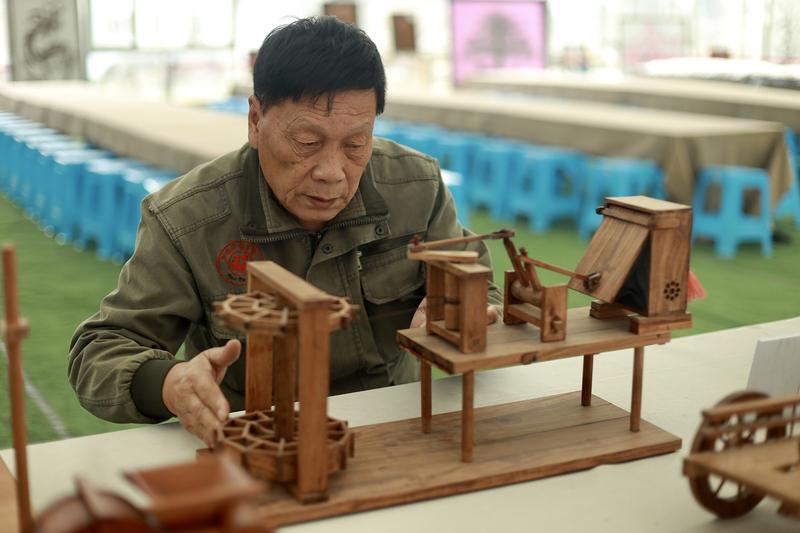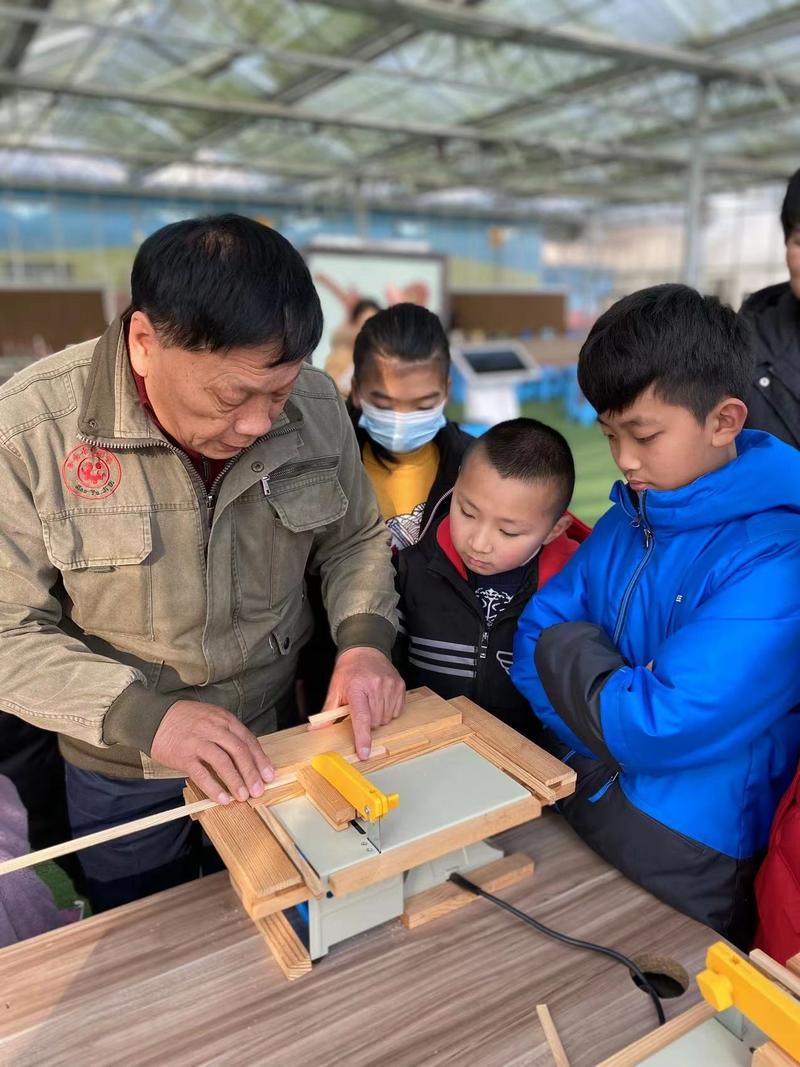Senior's dedication to rebuilding ancient technology appreciated by students
 Tang Jialu demonstrates a replica of an ancient Chinese device at Colorful Happy Farm in Chongqing. (DENG RUI / CHINA DAILY)
Tang Jialu demonstrates a replica of an ancient Chinese device at Colorful Happy Farm in Chongqing. (DENG RUI / CHINA DAILY)
A 75-year-old self-confessed "technofreak" who has restored dozens of full-scale ancient Chinese inventions is now trying to spark the interest of young people by offering them hands-on experience with the devices.
In March last year, Tang Jialu, who has been studying ancient Chinese science and technology for nearly 40 years, set up a research center in Chongqing for students to learn how to reproduce Chinese scientific and technological artifacts.
Located at Colorful Happy Farm in Chongqing's Shapingba district, the center contains a collection of two dozen models of ancient devices, among them a vertical-axle windmill and water-powered bellows.
Many windmills in China now mimic European designs, but as early as in the Han Dynasty (206 BC-AD 220), the country had its own style.
"That's the wisdom of our ancestors," Tang said, pointing at a picture of a restored windmill carefully filed away in one of his folders, adding that the shaft would rotate regardless of the direction of the wind and could power four stone mills simultaneously.
The sprightly man usually starts work at 8 am and finishes at 9 pm, teaching or preparing materials, and he sometimes returns to the center on sleepless nights to continue his research.
Students usually get 40 minutes of hands-on experience after a 20-minute overview of working principles from Tang.
"Studying here is much more fun and meaningful than playing with Lego," said 40-year old Li Xiang, who has taken his 10-year-old son Li Bohan, to the center twice. "It improves Bohan's hands-on skills and gives him an introduction to ancient knowledge."
Li said that he and his son have made miniatures of an ancient recliner themselves, shaping all its components and assembling it at the center.
"The teaching has paid off, and the students show a keen interest in ancient science and technology," said Wei Lai, director of Colorful Happy Farm.
 Tang teaches children how to make ancient devices at the research center. (PHOTO PROVIDED TO CHINA DAILY)
Tang teaches children how to make ancient devices at the research center. (PHOTO PROVIDED TO CHINA DAILY)
Some 20,000 students and their parents had visited the center by February, including 100 university students majoring in civil engineering.
Tang was born in Beijing in 1947. In the 1980s, he left the city to work at a research institute in Chongqing's Yongchuan district. He met some foreign visitors there, and by sending them each well-chosen examples of Chinese folk craft, such as a sculpture or a painting, Tang's interest in the past grew.
From 2004 to 2007, he traveled around Sichuan, Shaanxi, Guizhou, Jiangxi and Zhejiang provinces and Chongqing, collecting information about 200 ancient devices, making sketches of them to catalog traditional folk craftsmanship.
Using his mechanical drawing skills, he has spent 400,000 yuan ($62,760) of his pension to restore or reproduce 20 full-scale devices since 2016.
Most of the agricultural devices he has restored or reproduced can be found in The Exploitation of the Works of Nature (Tiangong Kaiwu), a technical encyclopedia published during the Ming Dynasty (1368-1644).
Another of them-the Nine Water Mills-which is depicted in the Book of Agriculture by Yuan Dynasty (1271-1368) agronomist Wang Zhen (1271-1368), is 10 meters long, 5 meters wide and 6 meters high.
In addition to studying traditional Chinese science and technology, Tang has come up with designs for about 1,000 souvenirs and handicrafts over the years, most of which are in commercial production. His hands are rough from years of manual labor.
"The Qin Dynasty (221-206 BC) lasted for only 15 years, while the Han Dynasty, which attached great importance to science and technology, lasted for over 400 years. That means science and technology might play an important role in the stability of society and economic development," he said.
Li Zuolin, a teacher at the High School Affiliated to the Renmin University of China and an expert on curriculum reform, said: "This elderly gentleman (Tang Jialu), who has had a genuine enthusiasm for keeping ancient science and technology alive his whole life, is admirable."
Nearly two years ago, Li met Tang in Beijing and was astonished by his work. He said that Tang has not only produced systematic written research into ancient science and technology, but has also come up with actual inventions that could serve as teaching resources for students and have far-reaching significance.
"The country is paying more attention to labor education, which is a good thing," Li said.
On March 20, 2020, the State Council, China's Cabinet, issued an initiative on strengthening labor education in colleges, secondary schools and primary schools. It calls for integrating labor education with training at school, at home and in society, to help students understand the unity of knowledge and practice, and form a correct worldview, outlook on life and values.
"Culture is the soul of a nation. We need to draw strength from traditional things," Tang said.
He said he hopes to build a museum large enough to display hundreds of replicas of ancient devices, including those used in agriculture, wind power and metallurgy, and in making textiles, earthenware, ancient vehicles and weapons. Currently, he is searching for a suitable place and investment.
"My hope is that this will give young people a better understanding of our long history, encourage them to contribute to Chinese civilization and strengthen their cultural confidence," Tang said.
Contact the writers at dengrui@chinadaily.com.cn


